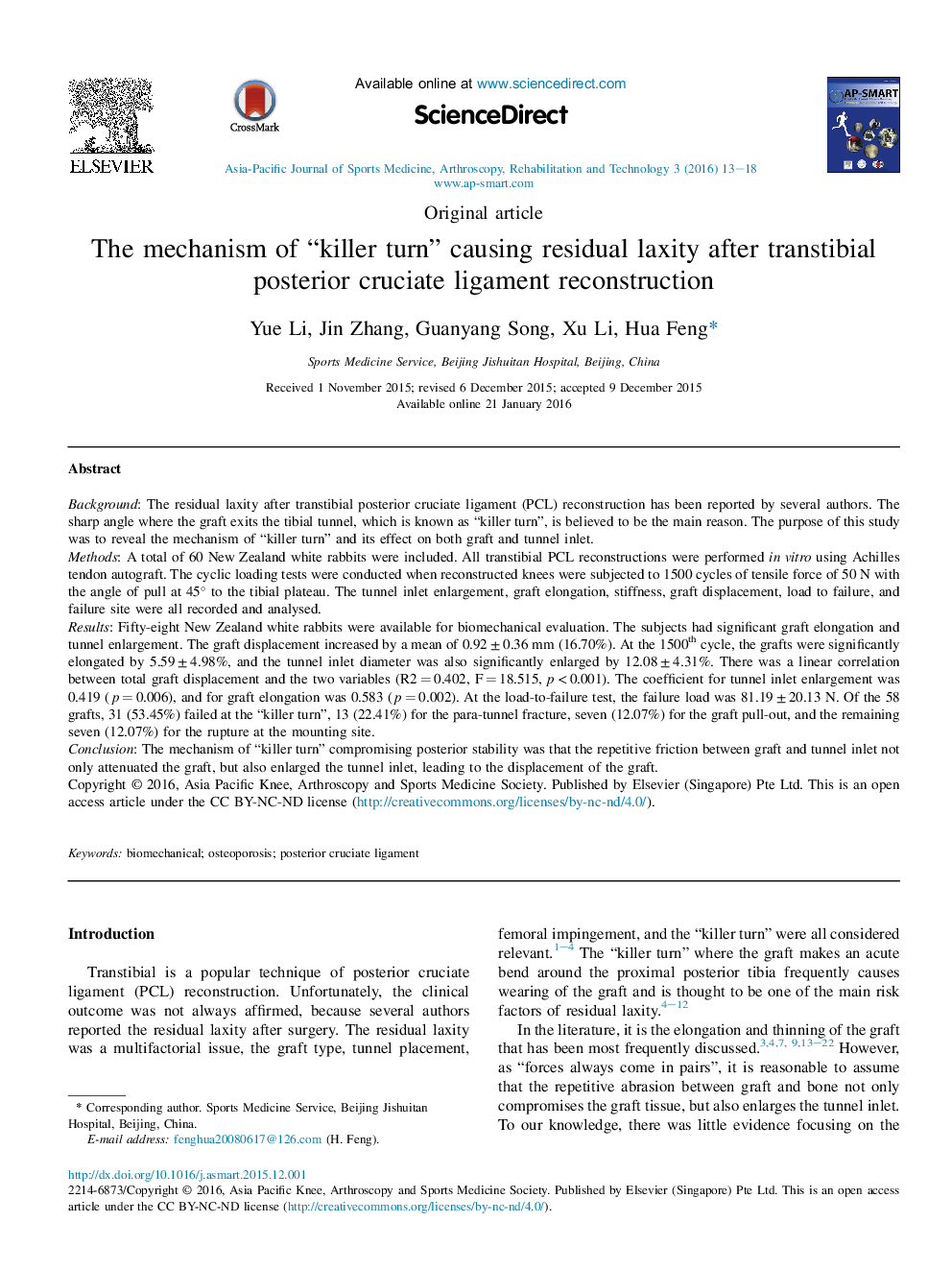| کد مقاله | کد نشریه | سال انتشار | مقاله انگلیسی | نسخه تمام متن |
|---|---|---|---|---|
| 2739508 | 1567051 | 2016 | 6 صفحه PDF | دانلود رایگان |
BackgroundThe residual laxity after transtibial posterior cruciate ligament (PCL) reconstruction has been reported by several authors. The sharp angle where the graft exits the tibial tunnel, which is known as “killer turn”, is believed to be the main reason. The purpose of this study was to reveal the mechanism of “killer turn” and its effect on both graft and tunnel inlet.MethodsA total of 60 New Zealand white rabbits were included. All transtibial PCL reconstructions were performed in vitro using Achilles tendon autograft. The cyclic loading tests were conducted when reconstructed knees were subjected to 1500 cycles of tensile force of 50 N with the angle of pull at 45° to the tibial plateau. The tunnel inlet enlargement, graft elongation, stiffness, graft displacement, load to failure, and failure site were all recorded and analysed.ResultsFifty-eight New Zealand white rabbits were available for biomechanical evaluation. The subjects had significant graft elongation and tunnel enlargement. The graft displacement increased by a mean of 0.92 ± 0.36 mm (16.70%). At the 1500th cycle, the grafts were significantly elongated by 5.59 ± 4.98%, and the tunnel inlet diameter was also significantly enlarged by 12.08 ± 4.31%. There was a linear correlation between total graft displacement and the two variables (R2 = 0.402, F = 18.515, p < 0.001). The coefficient for tunnel inlet enlargement was 0.419 (p = 0.006), and for graft elongation was 0.583 (p = 0.002). At the load-to-failure test, the failure load was 81.19 ± 20.13 N. Of the 58 grafts, 31 (53.45%) failed at the “killer turn”, 13 (22.41%) for the para-tunnel fracture, seven (12.07%) for the graft pull-out, and the remaining seven (12.07%) for the rupture at the mounting site.ConclusionThe mechanism of “killer turn” compromising posterior stability was that the repetitive friction between graft and tunnel inlet not only attenuated the graft, but also enlarged the tunnel inlet, leading to the displacement of the graft.
Journal: Asia-Pacific Journal of Sports Medicine, Arthroscopy, Rehabilitation and Technology - Volume 3, January 2016, Pages 13–18
